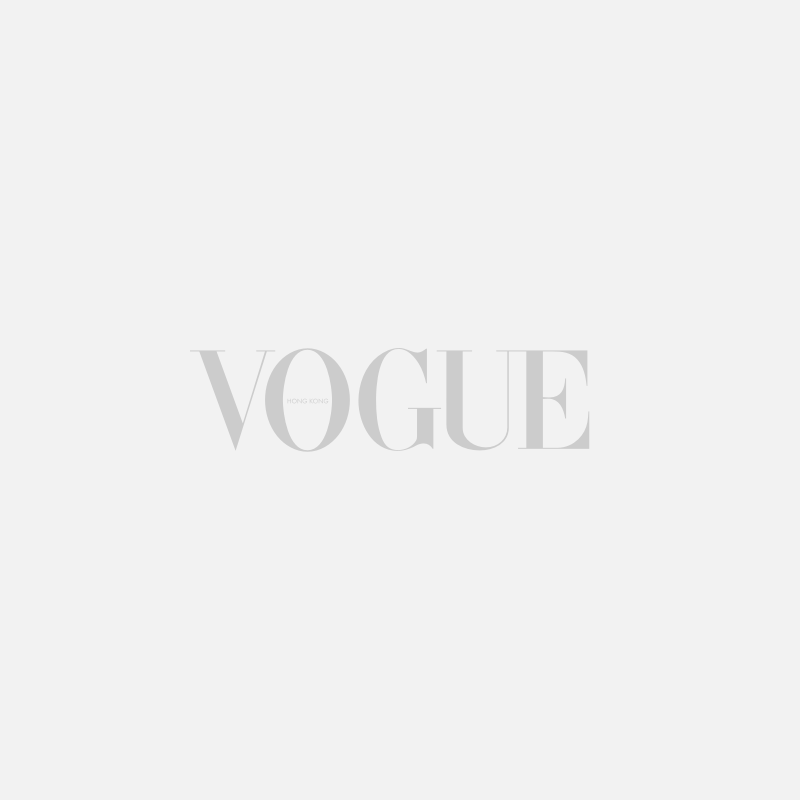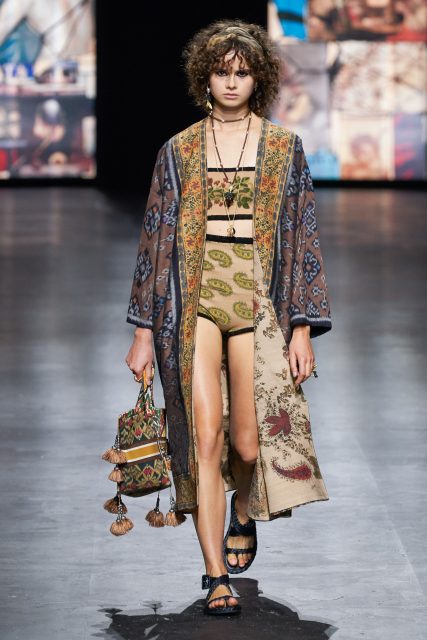Keen Hermès-watchers will know that each year, artistic director Pierre-Alexis Dumas chooses a theme that dictates forthcoming collections and activities. For 2020, Dumas chose “innovation in the making” – something he feels is even more prescient in the wake of the coronavirus. Drawing comparisons with the 1920s, when Hermès reinvented itself, transforming its equestrian atelier into an accessories house after the invention of the automobile eradicated the need for people to travel by horse, he told Vogue: “This decade ahead I believe very strongly is a time in which we are going to have to reinvent ourselves… We must have that long-term vision.”
Nadège Vanhée-Cybulski took that sense of innovation to heart for her womenswear collection. Staging a catwalk show for a limited number of guests in Paris, she also produced a series of films released on Hermès.com as well as a bound “scrapbook” sent to reviewers. The intention was to convey the nuances of the collection in a new way. “It was important to bring the whole universe around the clothes to people who could not make the show,” she told British Vogue, in a preview on the morning of the show. “We are innovating the way we communicate the collection, but also innovating the way we create the clothes – this has been an unprecedented period of creativity.” Here are all the key takeaways from her spring/summer 2021 offering.
Hermès commissioned a series of unique artworks to accompany the ready-to-wear
Reviewers unable to attend the show in person were sent a revitalising arrangement of Hermès orange flowers (note: they were a bespoke creation by Rakes Flowers) accompanied by a bound scrapbook with the aim of helping the audience “discover our collection like a poem”. Transportive images of windswept landscapes, ceramics, bunches of grapes, and watercolours being mixed on chintzy plates had been commissioned, appearing alongside artworks by the collage artist Katrien de Blauwer and the photographer Douglas Mandry, and interspersed with photographs of the new-season clothes.
“I had worked on some of the artworks for a previous project that didn’t happen due to Covid and I thought, this is so silly, we have so many beautiful materials – why not create a new way of communicating the collection?” said Vanhée-Cybulski. “I wanted to share the genesis, I wanted the book to be very intimate and different from a digital movie.” QR codes printed on the pages led to small video clips and a soundtrack curated by Frédéric Sanchez in a transition that felt very subtle and unshowy (and typically Hermès). The effect was soothing: coming across a delicate line drawing by the artist Graham Little, of a girl with a peculiar moon face dancing in printed Hermès silk pyjamas, felt like a particular gift on a rainy Saturday in London.
There were pyjamas in the collection – but it was emphatically not about “lockdown dressing”
Vanhée-Cybulski spent the confinement, to use the genteel phrase by which the French refer to lockdown, in Paris. “It was a creative period, because I knew we could not just stop living – we had to find a different way of keeping the creativity alive,” she said. “I had to be very flexible and agile, and at the same time I called it a ‘resurrection’. You rest, you feel better, you recalibrate, you rediscover the most essential things, and realise what is clutter in your life. It was unprecedented to stop for eight weeks and it left me feeling more creative than ever.”
These thoughts translated into comfortable clothes that felt polished and elegant. This wasn’t a Covid collection, though: “I didn’t project the lockdown on the collection – instead I was thinking about being outside. For me, it was about the freedom of being able to breathe fresh air, to embrace my friends, it was about sensuality and the assertiveness of a woman wearing the clothes.” But there were some domestic elements: the odd pair of upscale pyjamas in sky-blue and tomato-red; an apron style, though rendered in the softest lambskin; and some cosy blanket coats sporting collars that rolled over to create lapels, secured with neat leather straps.
There was a doubling down on minimalism
As a visualisation of wiping the slate clean (and beginning to build the perfect wardrobe), the spring collection was persuasive. Soft leather bralettes and knitted slim-line tops with key-hole backs were paired with A-line, knee-length skirts and soft leather bomber jackets, while coats were kept clean and sleek with minimal hardware. The colour palette was similarly restrained: largely black and white, with hints of red and pale blue, as well as chocolate and camel. Hints of drama came in the “fishnet” pieces: squares of leather sewn together in a grid, worn over second-skin dresses or simple shifts.
There were two new bag stars to look out for…
Nadège has a way with accessories and this season was no exception. Introducing the Perspective Cavalière and the Mors de Brides, a slim-line bucket bag and a more structured cross-body inspired by the house’s equestrian association, with hardware that resembles a horsebit. “They’re chic, I like them,” said Nadège, simply. We’re in agreement.
…And the most luxurious clog known to man.
In her quest to include a few more domestic items in the collection – the pyjamas, the apron trousers – Nadège hit upon that ultimate homespun footwear option: clogs. “They convey a fresh, natural spirit,” she said, of the leather styles which accompanied each of the 45 looks.






